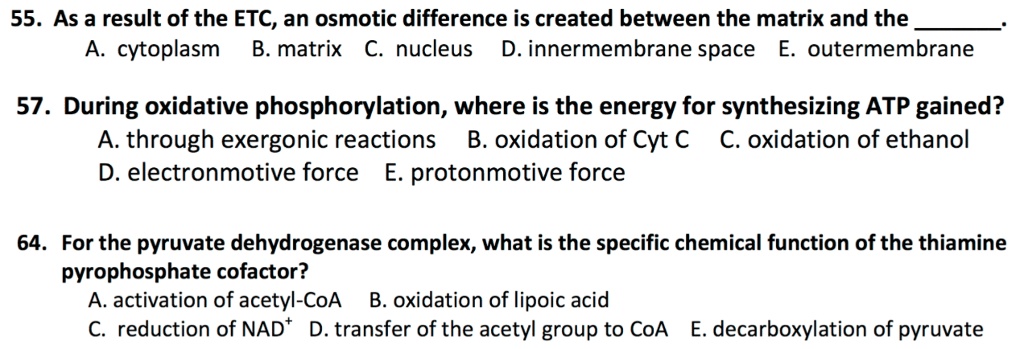BIOCHEMISTRY Lecture Notes - Lecture 1: Pentose Phosphate Pathway, Pyruvate Dehydrogenase Complex, Keto Acid
Document Summary
These vitamins are chemically not related to one another. They are grouped together because all of them function in the cells as coenzymes. Cereals (whole wheat flour and unpolished handpound rice) are rich sources of thiamine. When the grains are polished, aleurone layer is usually removed. Pyruvate dehydrogenase: the coenzyme form is thiamine pyrophosphate (tpp). It is used in oxidative decarboxylation of alpha keto acids, e. g. pyruvate decarboxylase, a component of the pyruvate dehydrogenase complex. It catalyzes the breakdown of pyruvate, to acetyl-coa, and carbon dioxide. Alpha ketoglutarate dehydrogenase: an analogous biochemical reaction that requires tpp is the oxidative decarboxylation of alpha ketoglutarate to succinyl coa and co2. Transketolase in the hexose mono-phosphate shunt pathway of glucose. The main role of thiamine (tpp) is in carbohydrate metabolism. So, the requirement of thiamine is increased along with higher intake of carbohydrates: deficiency manifestations of thiamine. Edema of legs, face, and serous cavities are the main features.


